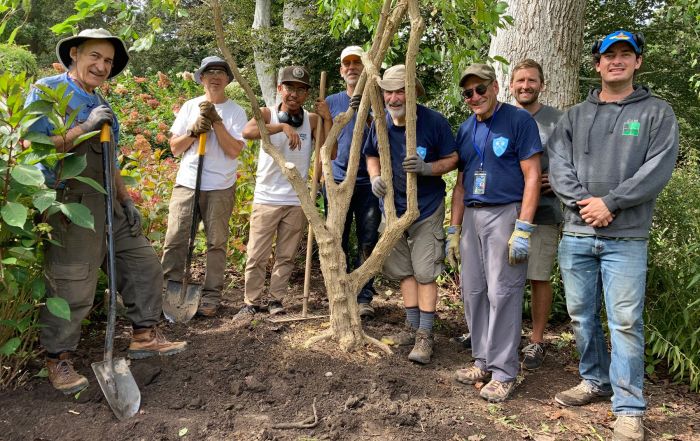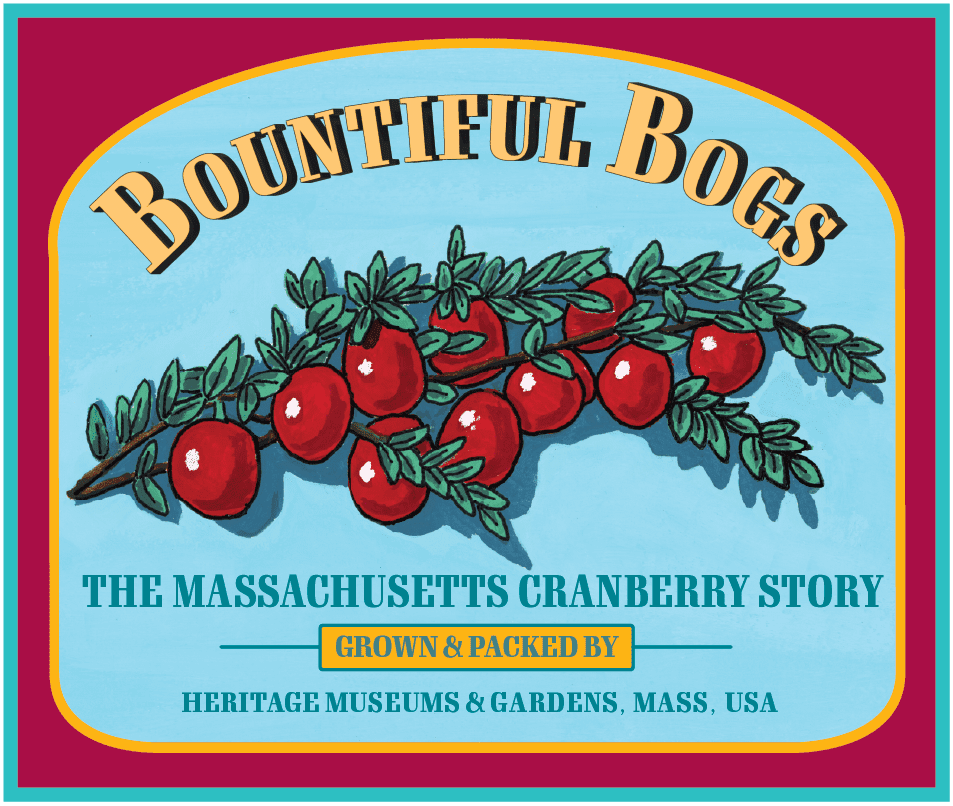Managing an Historic Collection of Rhododendrons
Ambling the paths at Heritage Museums and Gardens is an invitation to revel in a kaleidoscope of bright pinks, lavenders, purple and cream-colored flowers contrasted against a dark green wall of shining leaves. Rhododendrons are regal plants that calm the spirit. And Heritage is an historic epicenter for the diversity of garden Rhododendrons – at least for those known as Dexters. How does Heritage Museums and Gardens shoulder the weighty responsibility of managing this collection?
With some of the collections you can see here – the antique automobiles, the miniature soldiers, the paintings – you might appreciate the requirement of maintaining the right environmental conditions for long-term storage, and the call for documenting each object and curating the collection. But think about the challenge of maintaining a living collection of plants. For the Dexter rhododendrons, Shawme Farm represents the site of historical origin, and is also, as a consequence, Heritage then becomes the keeper of well over a thousand Rhododendron plants, the finest of which require regular care and attention. Think of the challenges of doing this, through droughts, snowstorms, hurricanes, heat waves, and bad luck.
Why assemble and maintain a collection? Just as you can appreciate the joy, and also the stories told by collections of cars, toys, or bird decoys in the museums here, you may be able to imagine that the Dexter Rhododendron collection, assembled in one place, serves as the vital material that tells a story of the past, and serves as a retrospective of one person’s devoted efforts. It is the legacy left behind by a person with vision, an assembled body of thoughtful work, and an important resource for rhododendron collectors, horticulturists, garden historians, landscape designers, and historic landscape researchers. The history captured by the glorious assembled Dexter Rhododendrons is also one piece of the history of this place on Cape Cod.
Dexter left behind many of his hybrids, about 180 of which have been named and officially registered, and many others that still exist without names. Heritage currently holds about 110 of Dexter’s named hybrids, as well as a number of other plants that are part of the Dexter story. However many of the other, remaining Dexter hybrids absent from Heritage’s gardens have been growing at other botanical gardens and arboreta all these years. Some Dexter hybrids have been lost completely. Some of those surviving at other gardens left Sandwich in the 1930’s, and some might have been growing at Heritage more recently, but then did not survive the passage of time.
In an effort to hold the most complete Dexter Rhododendron collection anywhere, the Garden has undertaken the important task of reassembling the missing pieces as much as possible. This has entailed researching all known Dexter hybrids in existence and finding out where they are growing – tracking down those hybrids which are missing from Heritage. In 2021 – one hundred years after Charles O. Dexter came to this spot, Heritage will be bringing back as many of these “missing” Dexters as possible, to expand and fill in the holes in their Dexter Rhododendron collection.
The different hybrids differ in how they look, how well they grow, their shape, and their tolerance of cold, or heat or other environmental conditions. Assembling these varieties into one location may also allow closer study of these environmental tolerances, and help us adapt our gardens to future global climate conditions as it impacts local climate and growing plants. This important project by Heritage Museum and Gardens to document and ensure the legacy of the Dexter Rhododendrons is important in the larger context of horticulture. Yet for Garden visitors, it will also enrich the sublime landscape on display in May and June. Your visit can elevate your mood, and at the same time bring good to larger goals of garden preservation. And that is a fine thing.
Recent garden news and events
Japanese Skimmia
Why Doesn't Everybody Grow Japanese Skimmia? By: Iris Clearwater, Senior Gardener For the entire month of April, every time I turned the corner by the labyrinth, I was overwhelmed with a heady, exquisite [...]
Fertilizing Hydrangeas: Keep It Simple
Fertilizing Hydrangeas - Apply the KISS Approach By: Mal Condon, Curator of Hydrangeas One of the most common concerns for the home gardener regarding hydrangeas is fertilizing – how much, when and how? [...]
Bottle Flowers: A How-To
Make Beautiful Bottle Flowers at Home! If you attended our Gardens Aglow event last year, you most likely saw our Bottle Flower garden. We've received a lot of questions about this upcycled project - [...]
Moving a Large Hydrangea – Relocating an Ancient PeeGee Standard at Heritage
Moving a Large Hydrangea - Relocating an Ancient PeeGee Standard at Heritage A couple of years ago I ‘rediscovered’ two very old Hydrangea paniculata ‘Grandiflora’ tree-form plants on the slope of the Arbor Bowl [...]




















